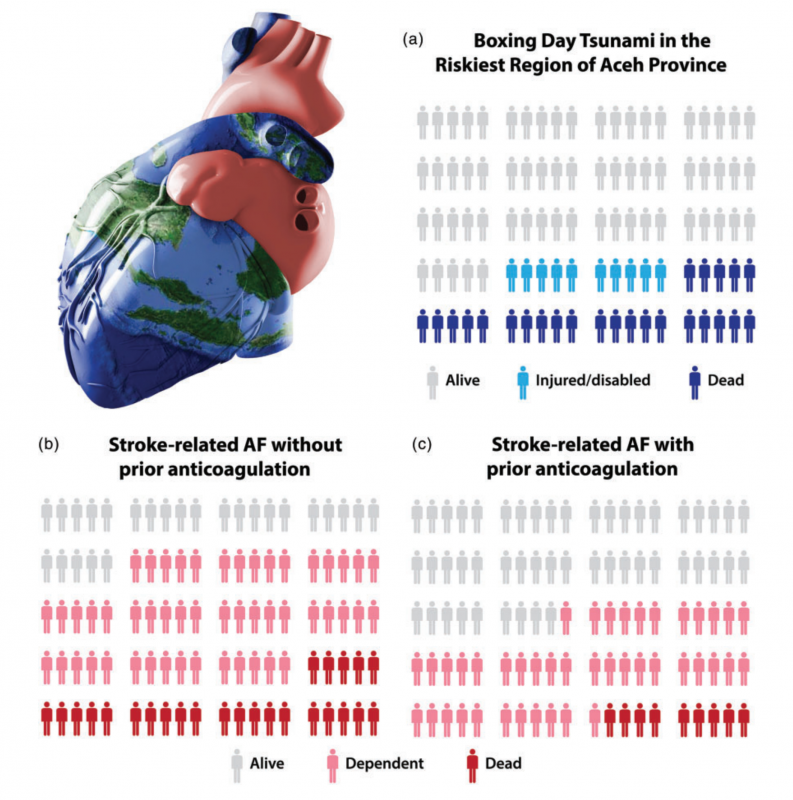Abstract: Atrial fibrillation affects 33.5 million people worldwide and its prevalence is expected to double by 2050 because of the aging population. Atrial fibrillation confers a 5-fold higher risk of ischemic stroke compared to sinus rhythm. We present our view of the role of shared medical decision-making to combat global underutilization of oral anticoagulation for stroke prevention in atrial fibrillation patients. Oral anticoagulation underuse is widespread as it is present within atrial fibrillation patients of all risk strata and in countries across all income levels. Reasons for oral anticoagulation underuse include but are probably not limited to poor risk stratification, over-interpretation of contraindications, and discordance between physician prescription preferences and actual administration. By comparing a catastrophic event to the consequences of atrial fibrillation related strokes, it may help physicians and patients understand the negative outcomes associated with oral anticoagulation under-utilization and the magnitude to which oral anticoagulations neutralize atrial fibrillation burden.
Keywords: Visual aid, framing, atrial fibrillation, stroke, oral anticoagulation, epidemiology


